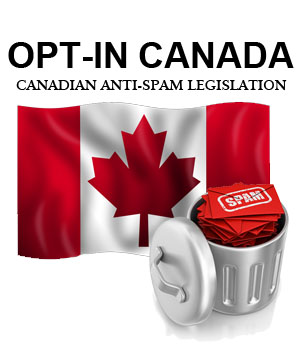Why a Logo is Important?
Have you ever taken a logo quiz? How often did you guess the right brand simply by its logo? For instance, brands like Tim Horton, McDo...

As of July 1st, 2014, Canada’s Anti Spam Law (also known as CASL) is cracking down on email SPAM. No one likes to get the random (and often times inappropriate) junk mail that filters into our inboxes on a daily basis. The new regulation was implemented to help eliminate unwanted email marketing such as this, as well as to ensure that everyone (individuals, incorporated and unincorporated businesses, not-for-profit organizations, etc.) who send electronic messages for commercial purposes are receiving consent to distribute email communications. Penalties for non-compliance can range from 0-$1 million for individuals, and 0-$10 million for corporations – this is not to be taken lightly.
All this being said, two questions come to mind – what qualifies as a commercial electronic message and what can you do to ensure you are compliant.
To see the techie definition of a commercial electronic message – see the definition at the bottom of this post but more importantly – here’s what you should be doing to comply – TODAY!!!
These tips can help you to organize your email lists and continue to send successfully within the new regulations. The unfortunate aspect about all the time and effort that will be placed into making sure Canadians are compliant with all their CEM’s is that this new regulations do not apply outside of Canada. So, all of our inboxes may still be cluttered with junk email from companies outside of Canada. More than 1,000 complaints have been filed since the new anti-spam law took effect July 1st.
For more information regarding CASL, visit fightspam.gc.ca/
Commercial Electronic Message (defined): is an electronic message that, having regard to the content of the message, the hyperlinks in the message to content on the website or other database, or the contact information contained in the message, it would be reasonable to conclude has as its purpose, or one of its purposes, to encourage participation in a commercial activity, including an electronic message that